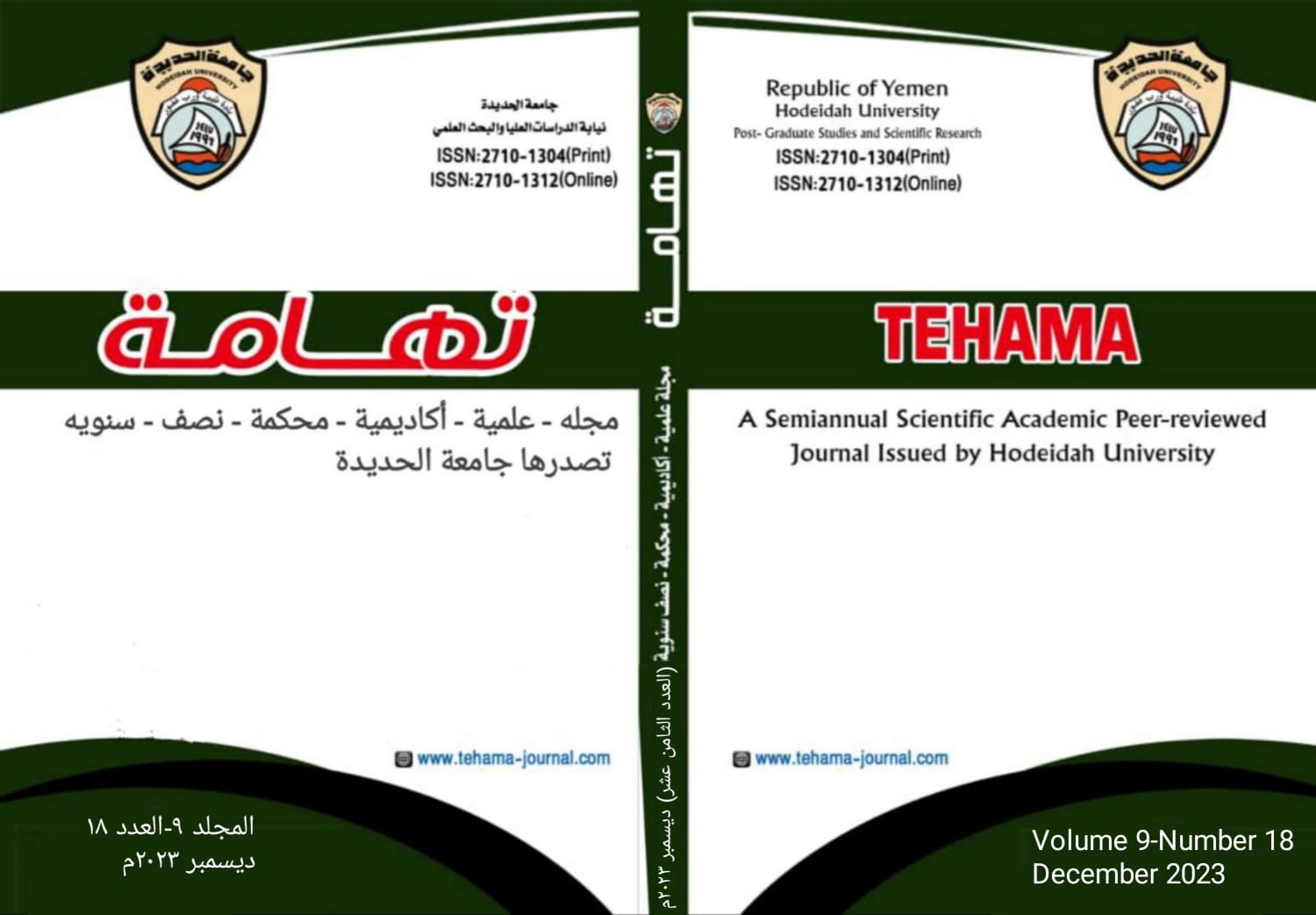من بلاغة الالتفات من خطاب الجماعة إلى خطاب الواحد وعكسه في الذكر الحكيم
DOI:
https://doi.org/10.59846/ojstehama.v9i18.236Keywords:
البلاغة، الالتفات، الخطاب، الجماعة، الواحدAbstract
The research examines "the eloquence of paying attention to the discourse of the congregation to the discourse of the one and its reflection in the Holy Quran." in order to identify new aspects of the Qur'anic miracle, to demonstrate the difference between the Qur'anic style and others, and to reveal the eloquent rhetorical secrets of the most eloquent stylistic characteristics of the attention that no one has alerted to in the knowledge of the researcher, based on the analytical technical method, which questions the immediate context and benefits from the extended context of that characteristic characteristic. The nature of the subject matter required that it be divided into three investigators:
- Research terminology and rhetorical concepts.
- Second: From the eloquence of paying attention to the congregation's discourse to that of the one in the Holy Quran.
- From the eloquence of paying attention to one's speech to that of the congregation in the Holy Quran.
The research concluded with several conclusions, most notably: One of the secrets of the transformation of discourse from one group to one and its reflection in the Holy Quran is to attract the attention of the recipient, who does not expel the style in a single pattern, and that everyone addresses what is stated in the noble verse, whether by order, prohibition, enticement or intimidation... Sometimes it comes to the occasion of the context of the verse in the place of monotheism, denial of polytheism and disbelief, and at other times the speech is directed at a particular intended person.
Downloads
Published
How to Cite
Issue
Section
License
Copyright (c) 2023 أ/ نافل بن زيد الحربي

This work is licensed under a Creative Commons Attribution 4.0 International License.





